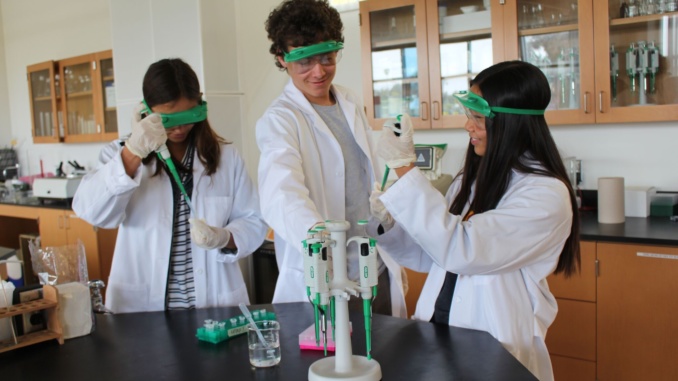
By Claire DuMont
Online Sports Editor
After Advanced Placement test- ing occurs, teachers across the nation and at Costa have different approaches on how to move forward with their courses for the remainder of the school year. Instead of teaching entirely new curriculum to students, AP teachers should expand students’ knowledge of material al- ready covered in the AP curriculum by focusing on in-class assignments and projects to supplement students’existing skills.
The College Board administered this year’s AP examinations from May 1 to the end of last week, leaving Costa AP students with less than a month of school following their exams, according to the Costa calendar. From the end of the AP tests to the last day of school, teachers have chosen to take vastly different approaches as to how they are going to fill their class time.
Photos: Students prepare for AP tests and projects
While some AP teachers have decided to teach new curriculum after the exam, others have decided to fin- ish the year with projects that focus on the material students had learned prior to the AP exams, AP Psychology teacher Timothy Piper said.
According to a La Vista survey of 200 students, 23% of students believes that teaching new curriculum after the AP exam would be somewhat useful, whereas 65% of students does not find it useful at all. Therefore, teachers shouldn’t teach new curriculum because, after the AP exam, students will likely not be engaged in learning new material they were not tested on, having al- ready covered everything necessary for the AP exam already taken.
Instead, teachers should focus on expanding students’ understand- ing of the curriculum they taught leading up to the AP exam through methods such as in-class projects.
According to Piper, projects can be a valuable use of class time in comparison to free periods or additional course material, because they can improve students’ knowledge of material they already learned and make that material applicable to the real world.
According to a La Vista survey of20 AP teachers at Costa, 84% stated that he or she is assigning projects after the AP exams were finished. Projects, when relevant to the mate- rial taught in the course, can be an alternative to teaching additional material in the class. Projects allow students to further their learning in the subject in a more creative way than through lectures and exams.
According to the College Board website, the purpose of AP courses is for students to receive college credit while still in high school. Stu- dents are able to do so by covering a certain amount of the material and taking the AP test.
According to the La Vista student survey, 70% of respondents said that his or her teachers covered all of the material that was going to be on the AP test before the AP test actually happened. Therefore, because a clear majority of students has learned the information deemed most important by the College Board by the time the exams occur, there is no reason for teachers to teach more information than necessary for the already rigorous courses.
Despite the benefits of focusing on prior curriculum, some subjects choose to teach new material after the AP exam, such as AP Microeconomics. According to AP Microeconomics teacher Adam Geczi, the time after the AP exam is used to focus on Macroeconomics through the use of lectures and discussions instead of exams, a vital aspect of the material not required for the AP exam. Although this approach could be beneficial, without exams or assignments to hold students account- able, they will likely not be fully engaged in the class.
While teaching additional mate- rial can seem like the most valuable use of class time after the AP test, students will be less engaged to learn new material, and with the absence of tests, will not be properly held accountable for the material. In-class projects and other methods of supplementing students’ knowledge are the most effective methods AP teachers can use to instruct their students after the AP test.




Leave a Reply